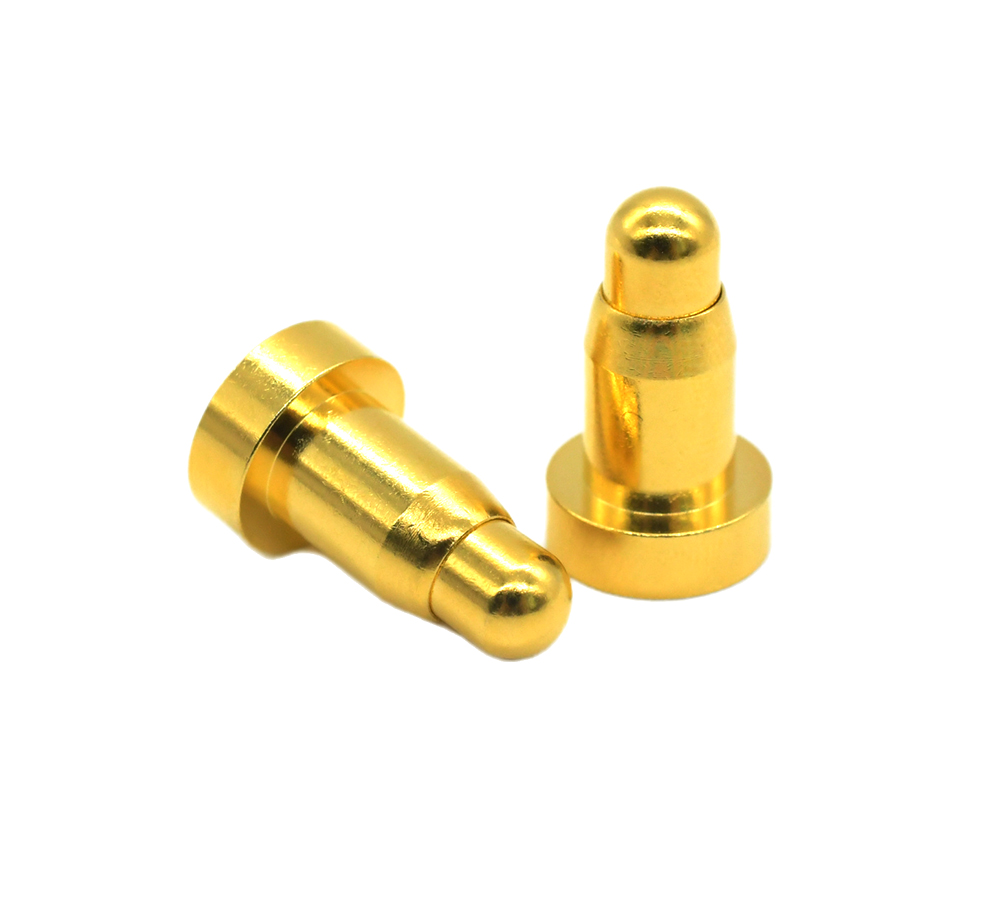Time:2025-08-26 Views:1 source:News

The Pogo Pin Signal Loss Control refers to the engineering strategies and design optimizations aimed at minimizing electrical signal attenuation (loss) as it travels through the spring-loaded contact pin—critical for high-frequency applications like 5G devices, automotive radar systems, and industrial IoT sensors, where even small signal loss can degrade data transmission speed or accuracy. Signal loss in Pogo Pins typically stems from three main sources: contact resistance (between the plunger and mating surface), conductor resistance (in the pin’s metal components), and parasitic capacitance/inductance (from the pin’s structure). Effective control measures target these sources to ensure signal integrity, with loss kept below 0.5 dB at operating frequencies up to 10 GHz (a benchmark for high-performance electronics).
Contact resistance is the primary contributor to signal loss, so optimizing the contact interface is key. The plunger’s contact tip is made from high-conductivity metals like beryllium copper (BeCu) or phosphor bronze, which have low inherent resistance. To further reduce contact resistance, the tip is plated with a thin layer of gold (1-3 μm) over a nickel underlayer (5-10 μm). Gold is chosen for its excellent conductivity and resistance to oxidation—oxidation on the contact surface creates a high-resistance barrier, so gold plating prevents this. The contact force (provided by the internal spring) is also calibrated: too little force leads to poor contact (high resistance), while too much force can deform the tip (increasing resistance over time). Typical contact forces range from 50-200 gf (grams-force), balancing low resistance with mechanical durability.
Conductor resistance is minimized through material selection and structural design. The pin housing and plunger use materials with high electrical conductivity—BeCu has a conductivity of ~55% IACS (International Annealed Copper Standard), while phosphor bronze offers ~20% IACS, making BeCu preferred for high-frequency applications. The pin’s length is also optimized: longer pins increase conductor resistance, so compact designs (length <10 mm for most consumer electronics) are used where possible. For longer pins (e.g., in industrial sensors), the cross-sectional area of the plunger is increased to reduce resistance, following the formula R = ρL/A (resistance equals resistivity times length over area).
Parasitic capacitance and inductance, which cause signal loss at high frequencies, are controlled via structural design. The pin’s spring is engineered with a tight coil pitch (1-2 mm) to reduce inductance—loose coils act like inductors, storing energy and attenuating high-frequency signals. The housing is made from non-conductive materials (e.g., PEEK plastic) or grounded metal (e.g., 316L stainless steel) to minimize capacitance between the pin and surrounding components. Grounded metal housings create a Faraday shield, reducing parasitic capacitance by providing a low-impedance path for stray electric fields. Additionally, the pin’s mating interface is designed to align with the mating connector’s ground plane, further reducing capacitance and inductance.
Testing validates signal loss performance. Manufacturers measure insertion loss (signal loss through the pin) using a vector network analyzer (VNA) at the pin’s operating frequency range. For 5G applications (3.5-6 GHz), insertion loss must be <0.3 dB to meet performance requirements. They also conduct endurance tests (10,000+ mating cycles) to ensure signal loss does not increase over time—wear on the contact plating or spring fatigue can raise resistance, so tests verify that loss remains stable. Environmental tests (temperature cycling, humidity) are also performed, as extreme conditions can degrade material conductivity and increase loss.
Whether used in a 5G smartphone’s antenna connection or an automotive radar sensor, Pogo Pin Signal Loss Control ensures reliable, high-integrity signal transmission—critical for the performance of modern high-frequency electronics.
Read recommendations:
Magnetic PogoPin custom manufacturer